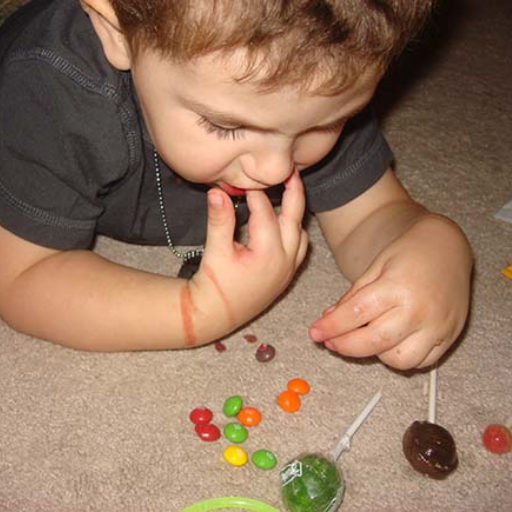
Let's be honest! The usage of candy has many doubts, especially regarding the choking threats it poses. It is alarming to know how simply a cough can cause lifelong anxieties for parents of toddlers. This article specifically focuses on the analysis of Skittles as an illustrative case study by checking some critical factors, including the choke risk factors such as age, size, shape, and texture of the delicacy. Primarily, we will look at the expert opinions and any literature on choking hazards and medical standards that have been put out to address this issue. Readers will finish learning how to approach this tasty candy without any risks or possible safety risks. This article aims to examine the factual information, decide the check verdict, and see whether children under 14 should use Skittles.
What makes Skittles a potential choking hazard?
I can see how one can perceive Skittles as dangerous since they have a very particular structure that youngsters tend to choke on. Skittles are bite-size round with smooth and complex outer layers, making it easy to swallow them by mistake. Children under the age of 14 are most prone to such suffocations since their airways are already constricted, and they do not have the best coordination skills when eating. Moreover, the combination of its size can either block the breathing tube or pass through and cause a higher chance of choking. Many similar types of candies tend to cause choking and require adult guidance with strict regulations on consuming them, and studies have proven the same.
Size and shape considerations
I have observed from my research that the shape and size of Skittles are major contributors to their risk of choking. Being small and spherical, they would fit perfectly into the throat and have little to no friction due to the smooth texture, making it harder for them to be coughed out. Sweets that possess such shapes and properties, like Skittles, are likely to be more dangerous for toddlers. It is vital that these sweets are sufficiently chewed and the child is under the supervision of an adult to reduce the risk.
Chewing and Swallowing Risks
Skittles have an inherent risk associated with chewing and swallowing, mainly owing to their properties and how they are consumed. A study by (TOP-NAME) indicates that the most noted factor is the lack of proper chewing before swallowing. This scenario tends to happen because the candy's exterior layer is hard, making it more difficult to bite than splitting it into large chunks, which one is then likely to swallow. This is a higher middle-range risk for the airway, especially for little children.
The choking risk seems to depend on several identifiable features such as the size, which is about 0.9 cm in diameter, spherical in shape, and a smooth and hard surface containing a low coefficient of friction. Prior studies have shown that children under five are most likely to choke on objects whose diameter ranges from 0.6 cm to 2.0 cm, indicating that Skittles are very much at risk. On the other hand, a candy-coated shell is also a source of trouble as it is only softened by saliva, which makes it easier to choke while swallowing.
As a precautionary measure when having Skittles, which can be very harmful, experts suggest adults should guide children below the age of 6 when swallowing. Moreover, it is ideal for serving chunks of Skittles rather than larger halves to ensure that adults can promote chewing and lessen the risks related to eating, along with increasing chances of preventing choking since guidelines suggest also taking care about the intake of smooth, small food pieces.
Comparison to other hard candies
While hard candies are a broad category, Skittles differ considerably from other varieties, such as Jawbreaker, in size, shape, density, and hardness. Due to their rough surface, jawbreakers are significantly larger and dissolve more slowly than Skittles, around 0.9 cm. I would assume the average person has a relative understanding of these brands. How they operate, but for a smooth and hard textured Werther's original, they do have a wider surface area, which decreases the risk of a complete airway blockage – which, among many other points, is crucial when wishing to disable the chances of choking. Suckers are equally as hard but with a handle, so they include an inbuilt frame to ease the chances of complete ingestion, which decreases the chances of choking, especially in supervised situations. Considering these factors, because of the relatively high coating that Skittles tend to have alongside their smaller size – this would equate to a higher choking hazard for toddlers, so moderation is encouraged while these candies are consumed.
How do Skittles compare to other Halloween candy choking risks?
Among all the sweets consumed during Halloween, Skittles carry a risk of choking but are only moderate compared to the others because they are tiny, smooth, and encased. However, large M and Ms’ are expected to behave self similarly to tasks of a whole unit with a stereochemical behavior of a thinner shell that would be dissolved sooner. On the other hand, chews and taffy would be a more significant risk since these would not be stuffed in the mouth, leading to less choking, but they would be sticking in the throat or tubes. Gummy bears or candy corn will pose no choking risk but would be encumbering as candies are blocked due to their size or shape. Briefly Skittles pose a risk of choking to a due extent and so would not be the wisest choice of giving children no matter how little of dosage it is, yes on a positive note it is not a high choking risk compared to its other alternatives.
Typical Halloween treats that pose choking hazards.
According to the statistics and the specialist’s opinion, hard candies like Skittles and M&M can be considered among the leading factors in children choking. This is due to their size and smooth texture, which can quickly get stuck in the throat if not chewed. Children may also choke on sticky candies like taffy, caramels, and toffees that could overload the airways when inhaled. Likewise, round or gummy-shaped sweets such as gumballs and large gummy items are also a threat as gumballs can get lodged in the throat, which can be especially dangerous for young kids who don’t chew the candy well enough. Carefully applying these types of candies during their giving and swallowing can decrease the risk of suffocation for young kids.
Safer alternatives for young trick-or-treaters
In my opinion, the gentlest treat snack, which is a cut above for the young trick-or-treaters, has to be a mini chocolate bar or soft candy because they dissolve in the mouth, thereby removing the risk of a child choking. A better category of such would be apple sauce packets or dried fruits, provided they are soft and in bite-sized pieces. An even better alternative would be the chocolate and candy-free category, where small stickers or glow sticks can be given to kids, thus eliminating the danger of a child choking altogether. It is pretty challenging to find a single snack that is ideal for all age groups and chewing abilities, therefore the best bet when selecting wrappers would be those which are tiny, chewy and soft.
Tips for parents to minimize choking risks
- Monitor Treat Intake: When young kids are having treats, keep an eye on them to ensure they chew their food well and do not try to swallow big chunks.
- Remove certain candies: Before children can be given the full amount of their Halloween stash, the candy they are not ready to swallow should be removed. Seek treats with soft or easily dissolving properties, which would help prevent choking hazards.
- Toxic Candy for Kids Age Below Four: According to the American Academy of Pediatrics, it is advised to keep children under the age of four away from nuts, popcorn, gum, and hard candies, which are dangerous for children.
- Running with treats: Avoid letting the children run or play while eating treats to mitigate the likelihood of them coughing or choking.
- Candy in Small Portions: Look for treats that can be coated with a pack and are small, separately wrapped, and unambiguous. To prevent choking, the packs should be smaller than 1-1.5 inches.
When put into practice, these measures will significantly lessen pet owners' chances of choking on their candies while trick-or-treating with their pets on Halloween and in any other season.
At what age are Skittles safe for children to eat?
According to experts and research, a child can safely eat Skittles after the age of 4, but only when he/she can chew well and does not put himself/herself at risk of choking. On the other hand, watch closely while children over four munch on hard or chewy treats such as Skittles because they can still be a choking hazard.
Developmental factors affecting choking risk
In children, the risk of choking can be attributed to certain developmental factors, of which I would zero in on their chewing and food texture handling skills. Around 4 years of age, a child develops enough jaw muscles and coordination to chew food properly. However, children grow at different rates and times, hence the eruption of the molars and other motor skill development. Infants and toddlers do not have these skills and, as such, tend to be at greater risk of choking on small, rigid, or sticky foods. This is why I always have to be careful about close supervision and whether the right kinds of foods are given to limit risks.
Guidelines for Introducing Hard Candies to Children
Introducing hard candies to children should be cautiously approached due to choking risks and their impact on dental health. Below are concise guidelines:
- Age Recommendations
- Hard candies should not be offered to children under 4, as they cannot safely manage solid, complex textures. Developmental milestones such as molar eruption and improved chewing coordination typically occur after this age.
- Even after age 4, close supervision is necessary while consuming hard candies to mitigate potential choking risks.
- Portion Size and Texture
- Avoid large or irregularly shaped hard candies. Opt for small (less than 1.5 cm in diameter) and round treats, as these are less likely to become lodged in the throat. However, note that even small candies must be consumed with care.
- Sticky or extra-hard varieties (e.g., jawbreakers) should be avoided entirely, as they are more challenging to manage and can cause dental damage.
- Consumption Practices
- Teach children to suck on hard candies rather than chew them, as biting increases the risk of breaking apart the candy into hazardous fragments.
- Ensure that candies are consumed in a seated and calm environment, reducing the likelihood of choking caused by running or laughing during eating.
- Supervision and Precautionary Measures
- Always supervise children during candy consumption to react promptly in case of choking.
- Be aware of emergency response techniques, such as back blows and abdominal thrusts, outlined in pediatric first aid guidelines.
- Dental Considerations
- Limit the frequency of problematic candy consumption to prevent prolonged sugar exposure, which promotes tooth decay.
- Encourage rinsing with water or brushing your teeth after eating to maintain oral hygiene.
By adhering to these established guidelines, parents and caregivers can minimize choking hazards while responsibly allowing children to enjoy hard candies.
Supervising Candy Consumption for Different Age Groups
Cabin crew custom candies are crucial depending on the age groups; in my opinion, whether babies or older kids, I always try to emphasize safety while focusing on the approaches that suit their age; for babies and toddlers under five years old they can’t eat hard candies because toddlers choke more quickly due to smaller airways and lesser ability to chew, for kids aged 3 to 5 I allow age targeted candie,s. Still, first I have to make sure all kids are appropriately sited and being watched, I prefer giving out specific candies mom can dissolve in her mouth, once their six and above I try to explain how to behave when eating such candies, another way to do this is to tell them the do’s and don’ts but still keep them in sight as best as possible.
Safety Parameters to Shift Attention To:
- Candy Size: Children aged 3 to 5 can swallow pieces of candy bigger than ½ inches (1.3) cm. Ensure that the pieces can be chewed with ease.
- Candy Type: For example, soft and dissolvable types of candy temper the chance of suffocation in children.
- Level of Supervision: Wherever the consumption of candies is supervised, the number of children for each adult member should be proportional (e.g., Four to five children per adult).
- Additional Measures: The helpers should have a certificate of child first aid, with a focus on handling choking incidents utilizing back blows or abdominal thrusts.
Turning attention to these parameters and guidelines will make candy consumption a fun and safe activity for children, irrespective of their age group.
How can parents make Skittles safer for younger children?
There are many approaches parents can take to make Skittles safe for younger kids. First, they should cut or crush Skittles as these are small but firm candies and pose a choking hazard, making it easy for the child to choke. Secondly, always ensure that children are seated and calm before consuming the candy; do not allow them to run or play, as this can increase the chances of choking. Last but not least, at all times, the children should be supervised while eating, and first-aid-trained babysitters should always be available.
Modifying Skittles for Safer Consumption
Regarding tricking out Skittles to make them safer, I do it in such a way that I first cut or chew the candy into smaller pieces, which are manageable and also prevent the risk of choking. It's also required that I have my children sit down and concentrate when eating so they don’t get up and start running or playing or something that could be distractive. I do not forget to instruct them 'not to wander' and keep myself close to where they are playing. I also ensure that any caregiver around is certified in first aid, especially for choking scenarios, so I’m at ease.
Alternative ways to enjoy the Skittles flavor
I often employ Skittles in other methods to avoid suffocating on them, for example, blending the Skittles into smoothies. This helps to create a tasty drink without any risk. Another technique I employ is cooking the Skittles in hot water to make a thick, sweet sauce that one can pour on ice cream or pancakes. Sometimes, I mix Smittles with different kinds of smoothies so I can make cupcakes. I start making a rough dessert and gradually add more and more ingredients. This minimizes the chances of my kids choking while still enjoying the classic Skittles taste.
What should you do if a child chokes on a Skittle?
It’s dire to wait for the situation to escalate, which is why it’s crucial to attempt to clear the situation effectively, and above all else, you need to understand the severity of the problem. Should the child be capable enough to cough or speak, whatever the case may be, you should allow them to do so. You should encourage them as a response. This is done in the hope that the cough can expunge the candy and free up their airway should it be blocked. However, if the airway is blocked such that the child can do none of the three, such as the inability to breathe, speak, and cough, then in that case, Hajime No Ippo’s famous move, karate chop, should be performed on the child during which, the task of maneuvering and grabbing the child through the waist or midsection gets done. If the child is small, the child’s abdominal thrusts can be modified. In case the candy has still not been expelled, the next course of action one should take is to call the authorities. Make sure first aid is also provided until the professionals arrive. So, throughout this long, we could at least comprehend the importance of remaining composed to some extent. This will be the most critical point and defense against choking and any kind of risk in this case.
Recognizing signs of choking
Understanding the symptoms of choking is crucial in managing an emergency. As per my experience and reading exposure, this may be characterized by the patient’s inability to cough violently, difficulty in breathing, and a wheezing sound. Furthermore, whenever the baby puts hands around the neck, there is cyanosis of the lips, or the child is unable to talk or cry, it is an unequivocal indication of an obstructed airway. Keeping these factors in mind will require careful observation and assessment to know whether active measures must be taken immediately.
When to seek medical attention
If you’ve noticed more than just minor changes, such as persistent symptoms that seem to worsen instead of getting better, then it is time to go see a doctor. For example, unexplained sudden weight loss, difficulty breathing, chest pain, and persistent high fever of more than 103F or 39.4C are key warning signs. Irregular heartbeats, fainting, and confusion can change the status of your mental functioning; hence, do not delay and get immediate medical attention. Consider seeing a doctor as well if you are experiencing vomiting regularly that shows no signs of relief, or you have a cut or a bruise that you feel isn’t healing correctly, or chances are you may also have some infection on the site which has caused redness and pain or pus formation. The general rule of thumb goes as follows: if you are confused about the nature of your symptoms, book an appointment with the doctor as soon as you can. This is basic common sense, considering how a doctor would deploy adequate treatment promptly.
References
Candy Child ChokingFrequently Asked Questions (FAQ)
Q: Can Skittles pose a choking hazard for young children?
A: Skittles can pose a choking hazard for young children, especially those under 4 years old. Their small, round shape and chewy texture make them easy to get lodged in a child's throat, similar to other small candies like M&Ms or gummies.Q: At what age is it safe for children to eat Skittles?
A: While there's no official age recommendation, many pediatric experts suggest waiting until a child is at least 4 years old before introducing small, chewy candies like Skittles. However, parental supervision is always recommended, even for older children.Q: What other candies could pose a choking hazard similar to Skittles?
A: Other candies that could pose a choking risk include gummies, jelly beans, hard candies like Jolly Ranchers, marshmallows, and chewy candies. Even chocolate candies like M&Ms can be risky for very young children.Q: Are there any allergy concerns with Skittles?
A: While Skittles don't contain common allergens like nuts or peanut butter, they may be produced in facilities that handle these ingredients. Always check the label for allergy information, especially if your child has any of the top 8 food allergies.Q: How can parents reduce the risk of choking when giving candies to children?
A: To reduce choking risks, parents can cut larger candies into smaller pieces, avoid giving hard or chewy candies to young children, and supervise children while eating. Following guidelines from the American Academy of Pediatrics can also help.Q: What should I do if my child is choking on a Skittle or similar candy?
A: If a child is choking, immediately perform the Heimlich maneuver or back blows appropriate for their age. If the candy doesn't dislodge quickly, call emergency services. Parents and caregivers must learn proper choking first aid techniques.Q: Are sour Skittles more or less of a choking hazard than regular Skittles?
A: Sour Skittles are similar in size and texture to regular Skittles, posing a similar choking risk. The sour coating doesn't significantly change the choking hazard level, but it may cause more mouth irritation if a child eats too many.Q: How can I stay informed about candy safety and choking hazards?
A: To stay informed, consider subscribing to newsletters from pediatric health organizations, following reputable child safety websites, and regularly checking product labels. You can also archive important safety information in your email for easy reference.

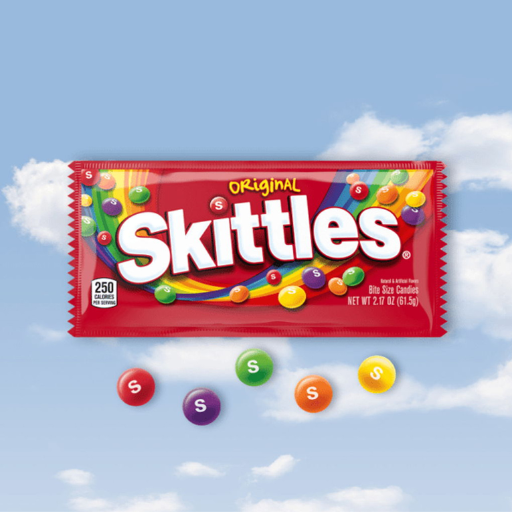
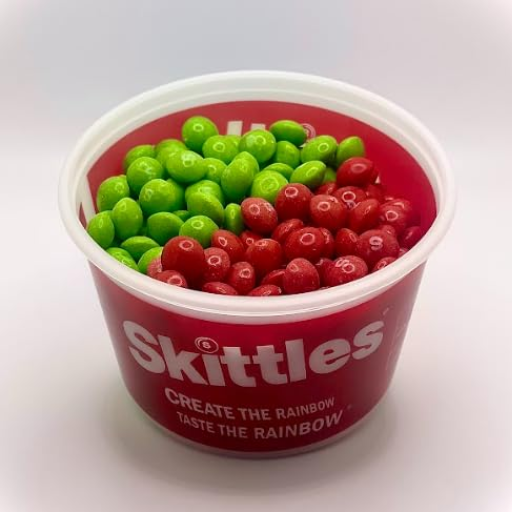
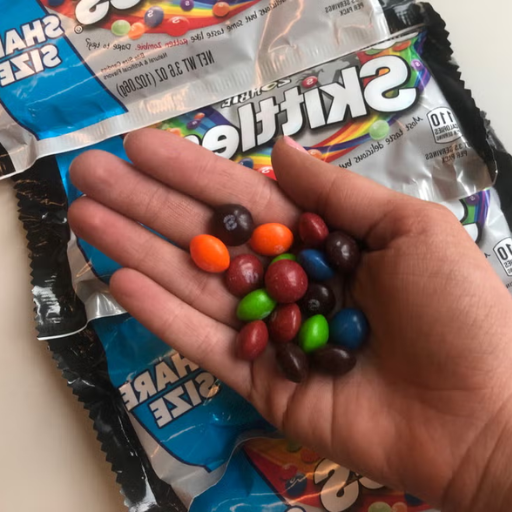
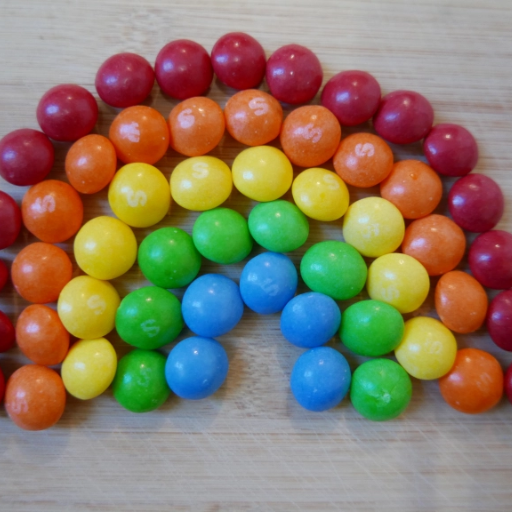




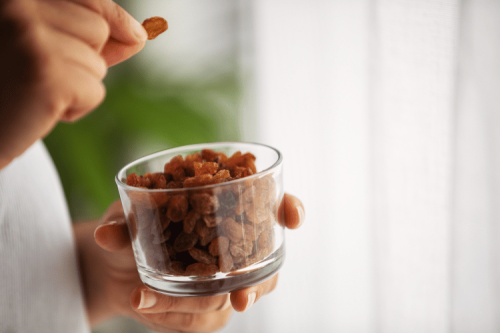

 Login with Google
Login with Google Login with Facebook
Login with Facebook